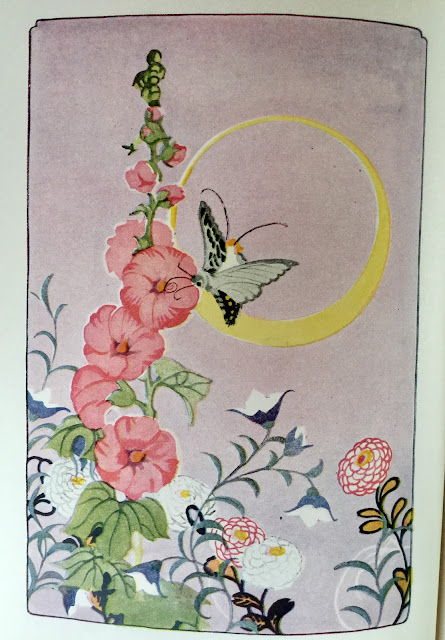 |
| Vogue Magazine February 15, 1924 |
Ninety-three years ago today Vogue offered A Forecast of Spring Fashions.

To put the fashions in context I researched what the world was like on February 15, 1924.
February 1924 events included the premier of
George Gershwin's Rhapsody in Blue in New York City. Gershwin's music melded popular music with symphonic music, starting a revolution. This year Leonard Slatkin of the Detroit Symphonic Orchestra has concentrated on the influence of Gershwin in a series called
Gershwin and His Children. On October 3, 2016 we were at Orchestra Hall to hear Slatkin conduct Rhapsody in Blue--an amazing concert.
In Egypt, Howard Carter raised the lid of King Tut's stone sarcophagus revealing the gold mummy case. Art Deco design was strongly influenced by Egyptian Art.
February 1924 saw the death of President Woodrow Wilson, the release of Mahatma Gandhi after two years imprisonment, and the birth of Margaret Truman to Harry and Bess and the birth of actor Lee Marvin. President Coolidge gave the first radio speech by a president.
1924 was the year Lenin died. MGM and the National Hockey League, and the Macy's Thanksgiving Parade were born. J. Edgar Hoover was appointed head of the Bureau of Investigation.
An
immigration act was signed, severely limiting immigration from Southern and Eastern Europe, severely restricting immigration from Africa, and banning Asians and Arabs.
President Coolidge also signed the Indian Citizen Act and after 302 years the war with the Indians ended.
Edwin Hubble announced that Andromeda was a galaxy, which like the Milky Way is one of many, changing how we Earthlings saw our place in the universe.

"The Silhouette is Short, Straight, and Slender" was announced in the Forecast of Spring Fashions.
That was great for young girls.
But how did more mature women cope?
First, they had to choose their clothes carefully, as some fashions added bulk and others skimmed the body.
Otherwise, it was all about the undergarments.
 |
| A dancing corset for the woman who needs hops and back held flat |
 |
This flesh colored brocade is ideal for rather heavy older women who require stiff boning
but have rejected the old fashioned, high busted types. The brassiere is of flesh batiste and net. |
 |
| A girdle and brassiere of flesh colored satin are designed for the slim girl. |
If the undergarments failed to provide the proper silhouette ladies could always try other means.
 |
| Rubber Reducing Garments |
Even Maternity Clothes could 'avoid the obvious'.
Four rules for maternity clothes: avoid draping over the belly bulge, avoid bright colors, choose cape backs, and forgo heels
Home sewing patterns from Vogue featured godets for 'graceful movement.'
Fashions featured scarfs and the cloche hat, dropped waists, and deep V-necks.
And of course the magazine included countless ads and photos of fashionable women.
The stylish shoe of 1924.
This year the Michigan State Museum had an exhibit on the cloche hat which I wrote about
here.
Babies and children also needed to be fashi0nable.
 |
| an 80 piece layette |
The fashionable lady traveled in a fashionable way.
And they drove to fashionable luncheons.
Wearing the latest perfume.
And makeup.
Maids and nurses apparently put comfort and freedom of movement over fashion.
The Great Gatsby by F. Scott Fitzgerald was published in 1925 and is set in 1922. These are the fashions that women wore as he was working on the novel.




















































































